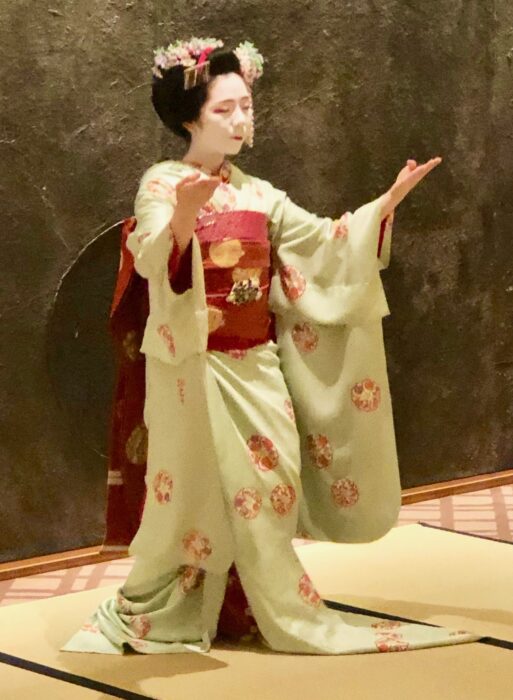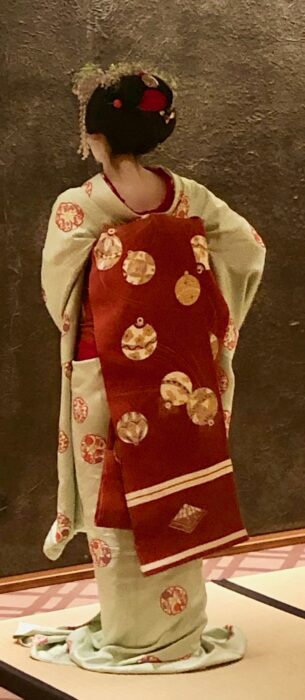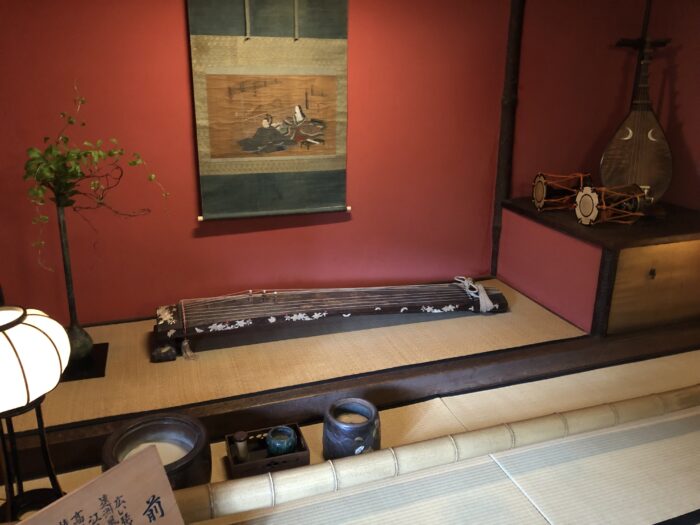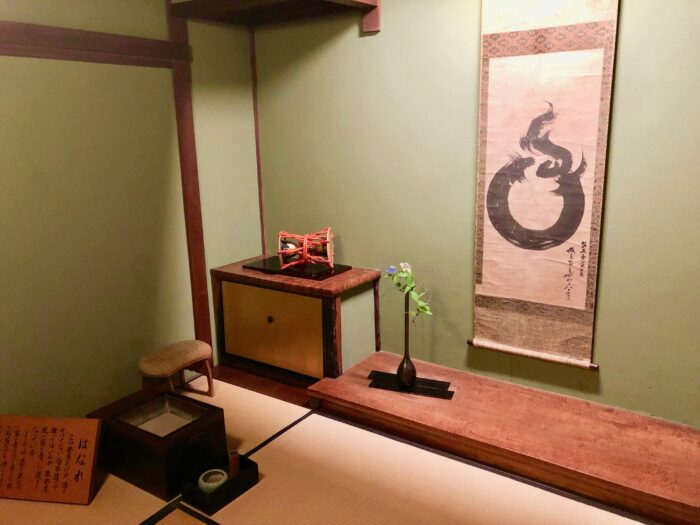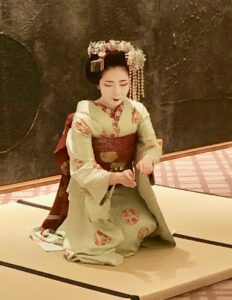
One of the many delightful features of the Hyatt Regency Hotel in Kyoto is a nightly dance performance by a maiko, or apprentice geisha. Chikasaya in her light green kimono and impeccable make-up performed nightly.
Maiko like Chikasaya begin their training at about age fifteen, after completing their manadatory education. Students have many choices to make when they complete middle school. If they choose high school, which school? If they choose vocational training, what do they want to learn? Chikasaya told us she always wanted to be a maiko. The girls train for a year before they attain maiko status and can perform.
Maiko like Chikasaya begin their training at about age fifteen, after completing their manadatory education. Students have many choices to make when they complete middle school. If they choose high school, which school? If they choose vocational training, what do they want to learn. Chikasaya told us she always wanted to be a maiko. The girls train for a year before they attain maiko status and can perform.
There’s so much to learn. As young girls, maiko wear heavier oshioroi make-up and brighter kimono than more mature geisha. Maiko wear their own hair which is styled weekly, so when they go out, they must wear traditional clothing. Geisha wear wigs and can go out in normal street clothes.
There is a distinction in how maiko and geisha wear the kimono. The maiko kimono has longer sleeves with a very long obi. At the center of the obi is an elaborate badge. Geisha have shorter sleeves, a shorter obi folded into a square at the back, and no badge. Neither the maiko nor the geisha can dress properly without the assistance of a dresser, usually male.
There are five different hairstyles to mark the stages of apprentice study. One of the hairstyles is nohongami with kanzashi hair ornamental strips. The hair decorations change monthly and are in keeping with the season.
Maiko also learn to do their own make-up. First a wax or oil substance called bintsuke-abura is applied next to the skin. This is followed by the white powder mixed with water. Once the powder came from lead. Today it is made with rice flour. This seven minute video shows one maiko’s skills in hair, makeup and dress.
First year maikos only color their lower lip red. In the second year, lipstick is added to the upper lip. A new geisha only colors the upper lip. The lips are supposed to give the illusion of a flower bud.
Geishas don’t generally wear such elaborate make up. As mature women, they allow their skin to show.
Tea Ceremony at Kinsho Temple
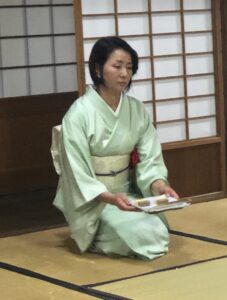
In Karatsu we observed a Tea Ceremony at Kinsho Temple. The abbot presided over a demonstration conducted by women in formal kimono. A Tea Ceremony has a host to prepare the tea, an assistant to serve the tea, a primary guest, and a secondary guest, and takes place in a special tatami mat floored room.
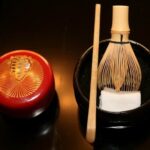
The materials for tea preparation are tea bowls, a white cloth to wipe the tea bowl, a tea caddy containing the matcha, a tea scoop, usually carved from a single piece of bamboo, and a tea whisk for mixing the matcha with the water.
The host boils the water over a charcoal fire and ritually cleanses each item before preparing the tea.
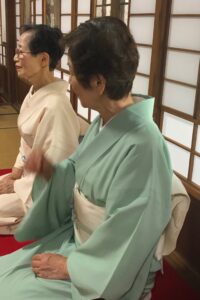
The guests receive food before the tea is served to counteract the bitterness of the tea. The tea is matcha, a powdered form of green tea.
Ochaya Shima
At Kanazawa there is a shopping street in the Higashi Chaya-machi geisha district established in 1820 as an entertainment district for rich merchants and the nobility. The word chaya refers to the tea houses.
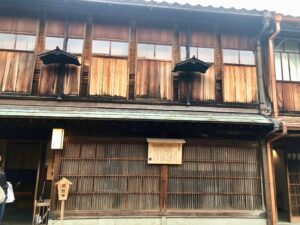
I visited the Ochaya Shima which is open to the public. Near the entrance was a reception desk where the proprietress prepared invoices and noted which geisha were performing in which room.
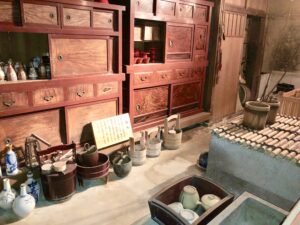
There was also a kitchen on the first level, though food served to guests usually came from nearby restaurant, and rooms for the proprietress and the geishas.
Guests went to the second level which had two sets of stairs so guests wouldn’t run into each other. The zashiki guest room was paired with a hikes-no-ma waiting room. Patrons sat in the guest area, and geisha performed on a stage in the waiting area.
Ochaya Shima had two facilities for entertaining clients; one with red decor, the other with green.
???
Implements for tea ceremony in public domain. All other photos by Author.

Sandra Wagner-Wright holds the doctoral degree in history and taught women’s and global history at the University of Hawai`i. Sandra travels for her research, most recently to Salem, Massachusetts, the setting of her new Salem Stories series. She also enjoys traveling for new experiences. Recent trips include Antarctica and a river cruise on the Rhine from Amsterdam to Basel.
Sandra particularly likes writing about strong women who make a difference. She lives in Hilo, Hawai`i with her family and writes a blog relating to history, travel, and the idiosyncrasies of life.

